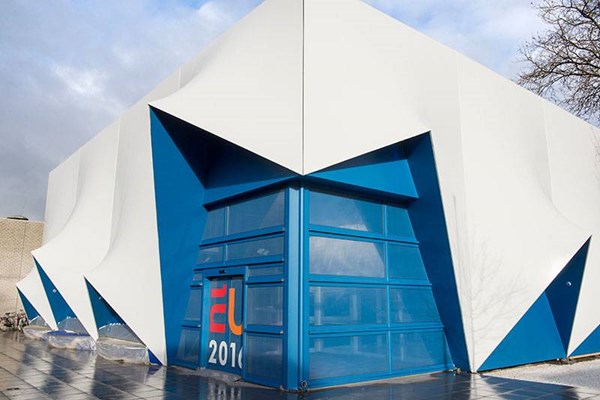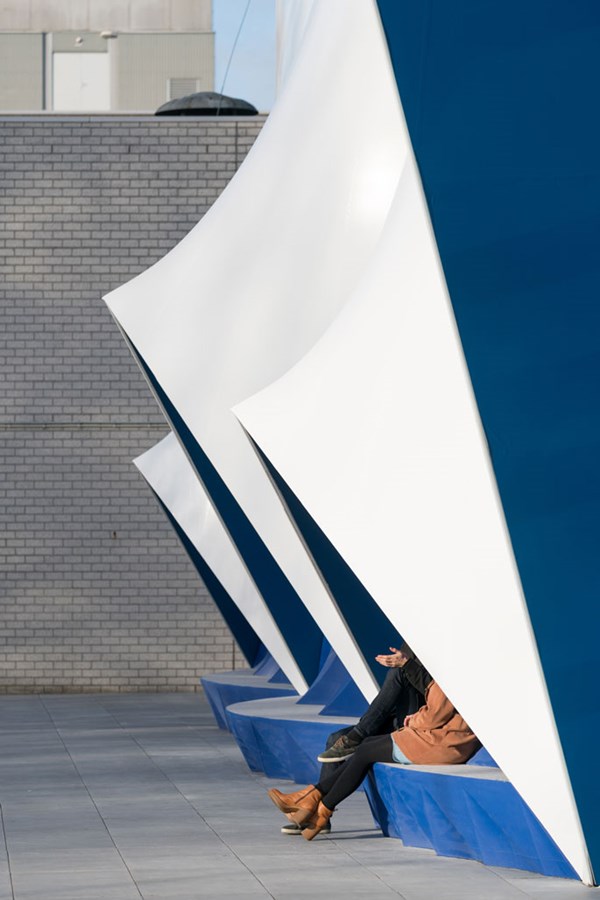Dutch EU Building Features ‘XXL’ 3D-Printed Bioplastic
Here’s an interesting story that combines bioplastics, 3D printing and recycling.

The Leadership of the Council of the European Union is conducted on a rotating schedule, meaning each country holds the presidency for six months at a time. The Netherlands took over on Jan. 1, 2016 and needed a place to hold the European meetings for the next six months. The group decided to use innovative resources in constructing the building for the meetings.
The entrance façade, designed by Amsterdam-based DUS Architects, consists of unique 3D printed elements made of bioplastic that the company says can be fully recycled after the presidency is over. The entrance of the building is partially constructed with shaped sails that refer to the historical sailing ships that used to be built in this area. This creates alcoves, which house EU-blue colored 3D-printed benches.
According to DUS Architects:
The printed patterns build up from large to small and round to square and depict the variety and community of the EU countries. Every seating element is parametrically designed and fits perfectly within each alcove. They are prototypes developed especially for the EU presidency, and printed locally with the XXL 3D printer of the 3D Print Canal House in Amsterdam. This life-size printer can print elements up to 2 x 2 x 3.5 meters. The prints are made of a specially developed bioplastic and the seating surfaces are filled with a light-colored concrete. The bioplastic can be shredded and reprinted after the presidency is over.
DUS Architects says this is the first time in the world that these kinds of XXL 3D prints are being shown in the public domain.
The project is the first commercial spin-off resulting from the collaborations on the 3D Print Canal House, which is an initiative of DUS architects and partners. The production of the 3D prints has been done by Actual, an Amsterdam-based start-up that develops online customizing software for building elements linked to XL 3D printing. The façade has been developed due to to the close collaboration between the various parties: DUS (design), Actual (parametric development & 3D printing), Neptunus (temporary structures), TenTech (engineering), Henkel (material development), Philips (light), and Heijmans (construction and assembly).

Related Content
-
Additive Technologies for Injection Mold Tooling Ride Tailwinds
NPE2024: Lowering barriers to additive manufacturing adoption in toolmaking.
-
DuPont Buys Medical Product Manufacturer Spectrum Plastics
Purchase price of $1.75 billion for leading supplier of extruded, molded, and 3D printed medical components.
-
Business Slowing? There's Still Plenty of Stuff to Do
There are things you may have put off when you were occupied with shipping parts to customers. Maybe it’s time to put some of them on the front burner.















